What You Need to Do If You’re Stung by a Wasp and How You Can Avoid It
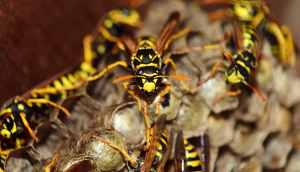 Wasps are a valuable part of our natural ecosystem. However, you might find that point a bit hard to swallow if you’ve ever been stung by them! They can be very aggressive and territorial and have no problem stinging someone multiple times if they feel like it. Wasps are surprisingly complex creatures, and by understanding a bit more about them, you can greatly reduce the chances of being stung. Keep reading for our essential wasp survival guide – it tells you how you can avoid these pests and what you can do if you ever come across them.
Wasps are a valuable part of our natural ecosystem. However, you might find that point a bit hard to swallow if you’ve ever been stung by them! They can be very aggressive and territorial and have no problem stinging someone multiple times if they feel like it. Wasps are surprisingly complex creatures, and by understanding a bit more about them, you can greatly reduce the chances of being stung. Keep reading for our essential wasp survival guide – it tells you how you can avoid these pests and what you can do if you ever come across them.
Why Are Wasps So Aggressive?
Wasps have a reputation for being aggressive, and while that can be the case it’s not always entirely fair. This reputation seems to stem from the way the wasp life cycle works, so it makes sense to understand a bit more about how wasps live so you know what to look out for.
The Wasp Life Cycle
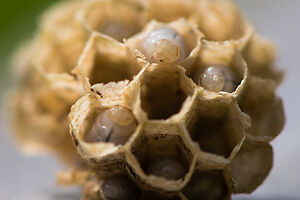 Wasps have a similar life cycle to ants, which are their closest relatives. Like ants, they live in a colony which consists of a single egg-laying queen, large worker wasps, and male drones. The workers are all female and are the ones who leave the nest in search of food. These females are sterile and while they can lay unfertilised eggs, these will only ever hatch into males. The males don’t have stingers and simply hang around the nest until it’s the mating season. The main difference between the life cycle of wasps and ants is that, unlike ants, wasps will abandon their colonies every year. This means wasps are cut off from their home and food source at the end of summer, which is why they seem so common and so aggressive after midsummer!
Wasps have a similar life cycle to ants, which are their closest relatives. Like ants, they live in a colony which consists of a single egg-laying queen, large worker wasps, and male drones. The workers are all female and are the ones who leave the nest in search of food. These females are sterile and while they can lay unfertilised eggs, these will only ever hatch into males. The males don’t have stingers and simply hang around the nest until it’s the mating season. The main difference between the life cycle of wasps and ants is that, unlike ants, wasps will abandon their colonies every year. This means wasps are cut off from their home and food source at the end of summer, which is why they seem so common and so aggressive after midsummer!
Founding the Nest
The wasp cycle begins at the end of summer when virgin queen wasps will mate with the males. The queens will go off to hibernate over the winter, while the male drones will simply die. When the queen wakes up in the spring, she finds a suitable spot and founds her own colony. This spot needs to be warm and dry, which is why nests commonly appear in sheds and garages. It also needs to be near a source of wood, as this is what the nest will be built out of. The queen will use her mouthparts to strip wood away from fence posts, shed walls, logs, and any other wooden object, and use this to build a small nest. Spotting these tiny white scratches appearing on wood is a telltale sign that you have a new wasp’s nest nearby, so be sure to keep an eye out in the spring.
Growing the Nest
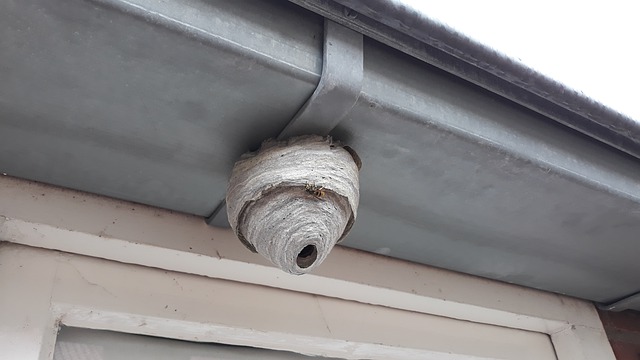 Once the nest is built, the queen lays a few eggs and then goes right back to expanding the nest. After the eggs hatch into larvae, the queen will start to forage for insects to feed to the grubs. The queen works tirelessly, splitting her time between laying eggs, feeding grubs, and building the nest, until the grubs pupate and turn into adults themselves. At this time, the queen takes a well-earned break and focuses on her egg-laying – the jobs of foraging for food and wood for the nest are taken on by the new adult worker wasps.
Once the nest is built, the queen lays a few eggs and then goes right back to expanding the nest. After the eggs hatch into larvae, the queen will start to forage for insects to feed to the grubs. The queen works tirelessly, splitting her time between laying eggs, feeding grubs, and building the nest, until the grubs pupate and turn into adults themselves. At this time, the queen takes a well-earned break and focuses on her egg-laying – the jobs of foraging for food and wood for the nest are taken on by the new adult worker wasps.
Sending Out the Workers
This happens around the beginning of summer, and it’s around this time that you’ll start to notice more wasps appearing. It’s almost certain that every wasp you see throughout the summer will be a worker (female) on a mission for food or building material. The queen is laying roughly 100 female eggs a day at this point, and these eggs hatch and mature very quickly. Wasps aren’t usually too aggressive during this time, but if you happen to find them close to their nest, they will try to defend their home fiercely. Unlike bees, wasps can sting you as many times as they like, so tread carefully.
Adult wasps don’t actually eat the insects they catch themselves. Many people assume they do because of their scary-looking mouthparts, but these mandibles are strictly for stripping wood and attacking rival wasps. Adult wasps feed on a sweet, sticky liquid that’s produced by wasp larvae – so the adults feed the grubs, and are in turn fed themselves! This is important to remember, as it’s the reason wasps love anything sweet.
Reaching the Limit
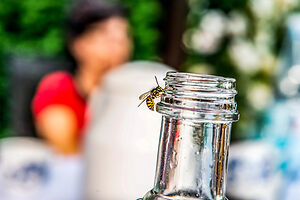 Around the end of summer, the wasp’s nest will be about as big as it can get. At this time, the queen starts laying queen and drone (male) eggs. Amazingly, this happens at roughly the same time across the country to ensure the males and queens have lots of other wasps from other colonies to mate with. These are the last eggs the queen will lay, meaning the colony is on borrowed time. Eventually, the virgin queens and male drones leave the nest to mate.
Around the end of summer, the wasp’s nest will be about as big as it can get. At this time, the queen starts laying queen and drone (male) eggs. Amazingly, this happens at roughly the same time across the country to ensure the males and queens have lots of other wasps from other colonies to mate with. These are the last eggs the queen will lay, meaning the colony is on borrowed time. Eventually, the virgin queens and male drones leave the nest to mate.
This is the time of year when wasps cause the most problems. Earlier, we mentioned how adult wasps feed on the sweet substance secreted by their larvae. Well, once the last batch of grubs grows up, the thousands of workers in the colony have no food supply and no real reason to stay at the colony anymore. They leave the dying nest in search of a food source, which is when we tend to come into contact with them.
Drunk and Disorderly
Wasps are essentially on their last legs at this point. They’re agitated and more aggressive than usual as they’re desperately looking for a new food supply. This is made even worse by a wasp’s natural attraction to sugary food and drinks, particularly alcoholic drinks or rotting, fermented fruit. Drinking alcohol only makes the wasps even more aggressive while also making them much more unpredictable. If you see one, it’s hard to say what it’ll do – it might be scared off if you flap at it, but it might become more aggressive and sting you. The best approach is to gently and slowly brush it away with a piece of paper or clothing.
The End of the Colony
With the colony’s purpose now fulfilled, the queen and the now free-roaming worker wasps all die. In their place, there are thousands of new queens who can mate and hibernate at the end of summer to start the cycle off again.
How to Avoid Wasps
Secure Your Shed
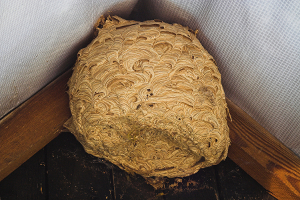 Your shed is the perfect location for a wasp to set up a nest, but only if they can get inside in the first place. Make sure your shed or garage is patched up in time for the spring when queen wasps will be out looking for somewhere to start a colony. This should dramatically reduce the number of wasps that find their way into your garden later in the year.
Your shed is the perfect location for a wasp to set up a nest, but only if they can get inside in the first place. Make sure your shed or garage is patched up in time for the spring when queen wasps will be out looking for somewhere to start a colony. This should dramatically reduce the number of wasps that find their way into your garden later in the year.
Wear Light, Pale Colours
Wasps can be set on edge by both bright and dark colours. Bright colours mean you might be confused for a flower, while darker colours make you look like a wasp’s natural predator (such as a badger or a skunk). Wearing pale pastel colours means wasps will be naturally less interested in you.
Avoid Perfumed Cosmetic Products
Like many insects, wasps have an acute sense of smell. They’ll be attracted by anything that smells sweet, so perfumed shampoo, skin cream, deodorant, and more should be avoided in the late summer. Use natural, non-perfumed equivalents if you’re worried about wasps.
Time Your Activities
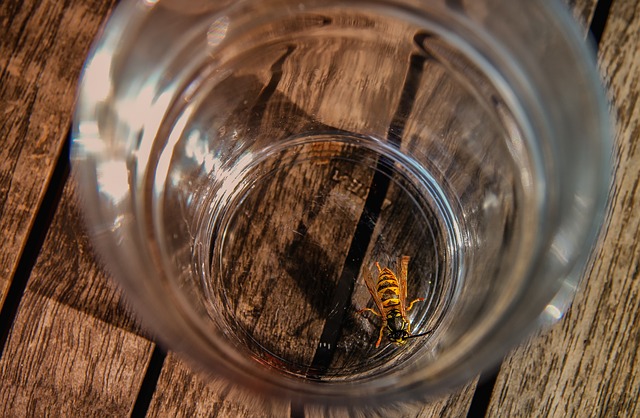 Like bees, wasps are most active during the warmest parts of the day. If you have a BBQ planned, consider holding it later in the afternoon when the weather is cooler. Chances are there’ll be fewer wasps around.
Like bees, wasps are most active during the warmest parts of the day. If you have a BBQ planned, consider holding it later in the afternoon when the weather is cooler. Chances are there’ll be fewer wasps around.
Don’t Burn Scented Candles
You might think the smoke from a scented candle would deter a wasp, but it actually has the opposite effect! The sweet smell from a scented candle will attract wasps, so avoid using them during the height of summer.
Stay Away from Nests
This might sound obvious, but if you choose to get rid of a wasp’s nest yourself, make sure you do it from as far away as possible! Just walking up and trying to smash the nest is a recipe for disaster and will do nothing but enrage the entire colony. Use a powerful smoke bomb that you can set up a good distance away from the nest itself (more details on this later).
Don’t Squash Them
Wasps use pheromones to communicate with one another. One of these pheromones is released when a wasp is squashed; it’s essentially a security alarm that tells the other wasps in the area to go into self-defence mode. This means any other wasps in the area will be much more aggressive towards you!
How to Tell There’s a Wasp’s Nest Nearby
White Scratches Appearing on Your Garden Fence
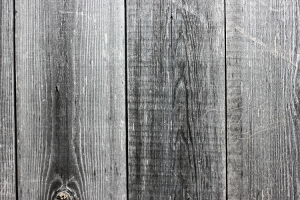 Wasps spend much of their lives building their nest. They do this by chewing up wood into a paper-like substance and carrying it back to their colony. From the spring onwards, you might notice small, scratchy patterns appearing on your garden fence, wooden shed walls, or any other wooden objects you have outside. If you notice this, make sure you’re on the lookout for a new nest nearby.
Wasps spend much of their lives building their nest. They do this by chewing up wood into a paper-like substance and carrying it back to their colony. From the spring onwards, you might notice small, scratchy patterns appearing on your garden fence, wooden shed walls, or any other wooden objects you have outside. If you notice this, make sure you’re on the lookout for a new nest nearby.
Damp Patches Appearing on Your Walls
Wasp nests need to be a little hotter than the outside to provide the perfect environment for their young, but the grubs will die if the nest gets too hot. The adult wasps have a clever way of preventing this, though – they’ll carry water back to the nest and spray it inside to regulate the temperature. If the nest is built inside a wall void, some of this water will soak through the wall and cause a damp patch to appear. If you notice this happening around the start of summer, then it’s worth investigating.
Seeing for Yourself
Seeing the odd wasp here and there doesn’t necessarily mean there’s a nest nearby. However, if you notice several wasps flying around a particular area, it could be a sign that they’re building a nest. Common nesting sites include sheds, garages, bird boxes, lofts, and any other sheltered spot with a clear exit to the outdoors.
Wasp nests are easy to identify – they’ll usually have swarms of wasps around them in the daytime! They can also be identified thanks to their papery shells, which look a bit like cardboard.
Getting Rid of a Wasp Nest
If you’re really unsure about dealing with a wasp’s nest, or if the nest is located outside, we recommend you hire a professional to do the job for you. Wasps have an invisible perimeter around their nest, and they’ll swarm on anything that crosses it. Don’t risk it unless you’re certain you know what you’re doing and the nest is in a convenient spot.
Smoke Bombs
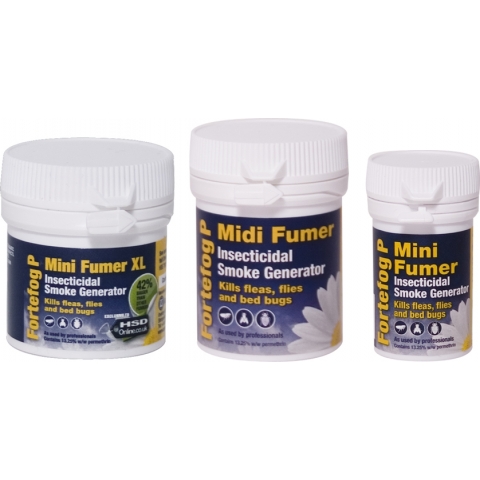 If the nest is located in your shed or garage, you can get rid of it yourself using a smoke bomb. Make sure you choose a larger, more powerful fumer that you can set a good distance away without getting too close to the nest. Just light the fuse and leave the area, making sure you close the door and plug as many gaps in the door frame as you can.
If the nest is located in your shed or garage, you can get rid of it yourself using a smoke bomb. Make sure you choose a larger, more powerful fumer that you can set a good distance away without getting too close to the nest. Just light the fuse and leave the area, making sure you close the door and plug as many gaps in the door frame as you can.
Bear in mind that smoke bombs will not be effective in outdoor areas. If the nest is located inside a bird box or in a tree, you’ll need professional help to get rid of it.
How to Treat a Wasp Sting
Wasp stings are no joke, but by following these simple steps you’ll be able to treat them as quickly as possible.
Leave the Area, Go Indoors if Possible
Your first priority should be to leave the area before you start treating the sting. Wasps can sting multiple times, with each sting injecting more of their venom into your skin. This is not only extremely painful, but it also marks you with a pheromone that will cause other wasps to target you. The last thing you want is to attract more aggressive wasps, so leave the area as quickly as you can before you start treating the sting.
Wash the Sting
Wasp stings don’t get stuck in your skin, so you can wash the area with soap and water.
Elevate and Compress
Use a cold compress or an ice pack while elevating the area if possible. These things together will help to reduce swelling and should ease some of the pain.
Keep it Clean
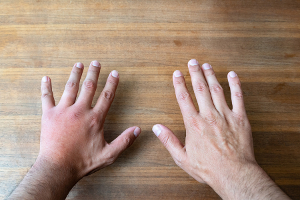 Avoid scratching the area and make sure you regularly wash it to keep it clean. Wasp stings are especially prone to infection, so it’s good to take a bit of extra care to do this. If the sting remains itchy and swollen, you can use antihistamines. Issues from wasp stings usually go away within 24 hours, but you should seek medical advice if they go on for any longer.
Avoid scratching the area and make sure you regularly wash it to keep it clean. Wasp stings are especially prone to infection, so it’s good to take a bit of extra care to do this. If the sting remains itchy and swollen, you can use antihistamines. Issues from wasp stings usually go away within 24 hours, but you should seek medical advice if they go on for any longer.
Should You Use Vinegar on a Wasp Sting?
One of the most popular home remedies for wasp stings is cleaning it using vinegar (or some other mildly acidic thing like lemon juice). The theory is that because wasp venom is slightly alkaline, the acid in the vinegar neutralises it, in turn easing the pain.
Unfortunately, there isn’t any evidence that vinegar helps with wasp stings. While wasp venom is slightly alkaline, that isn’t why they hurt. Wasp stings contain a cocktail of nasty chemicals including the nerve agent acetylcholine, which basically switches on the pain receptors around the sting. It’s far more complicated than balancing out acids and alkalis, but the good news is that your body’s immune system should be more than capable of straightening things out in time.
There isn’t really any evidence that rubbing vinegar on a wasp sting is harmful, but you should focus on keeping the area iced and elevated instead.



